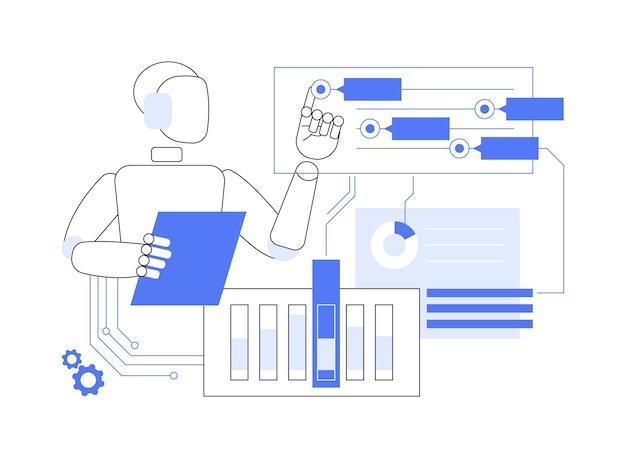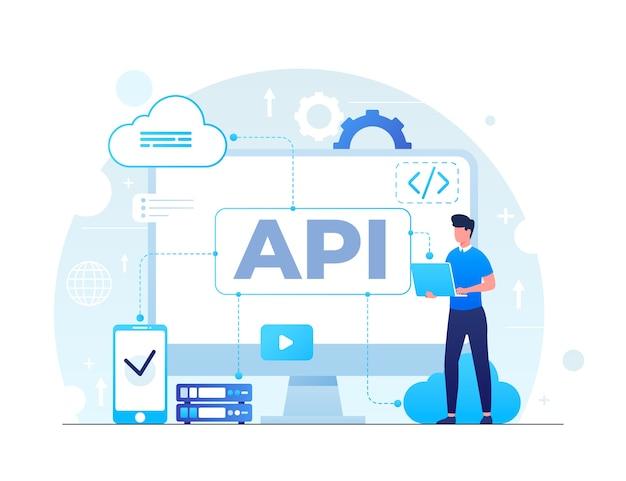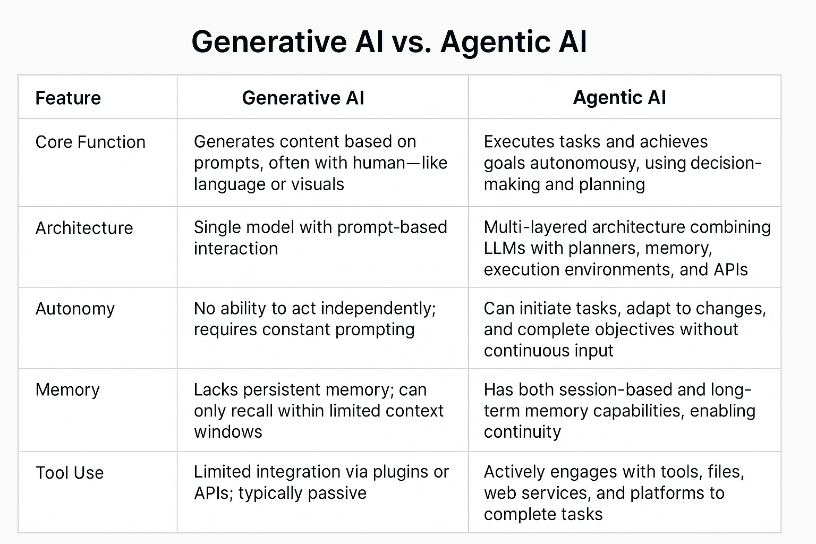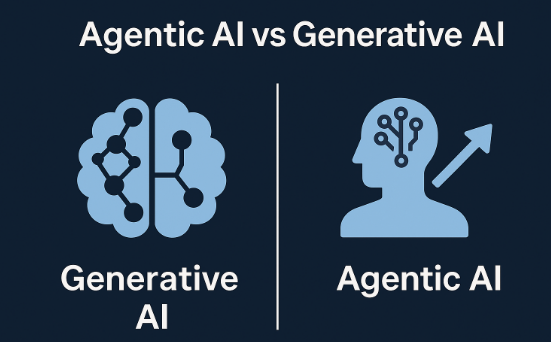Agentic AI vs Generative AI: Understanding the Shift From Content Creation to Autonomous Action

Audio : Listen to This Blog.
The AI landscape is undergoing a seismic shift. We’re moving from tools that generate content based on prompts to intelligent systems capable of making decisions, solving problems, and completing tasks independently. This evolution marks the rise of agentic AI, a class of AI models designed not only to respond but also to act.
Agentic AI focuses on autonomous decision-making and goal achievement, introducing memory, planning, autonomy, and reasoning into the mix. In contrast, generative AI specializes in content creation, producing text, images, or code when prompted. This blog explores the distinct features and applications of agentic AI and generative AI, emphasizing their unique objectives and capabilities. We will also discuss various use cases for both types of AI, illustrating their relevance and potential impact across different industries.
Introduction to Artificial Intelligence
Artificial intelligence (AI) refers to developing computer systems that can perform tasks typically requiring human intelligence, such as learning, problem-solving, and decision-making. AI systems encompass a range of technologies, including traditional AI, machine learning, and deep learning. In recent years, two notable types of AI have emerged: Generative AI and Agentic AI.
Unlike Generative AI, which focuses on content creation, Agentic AI operates with minimal human intervention, enabling AI agents to make decisions and act autonomously. This shift from reactive to proactive AI systems marks a significant evolution in artificial intelligence.
What is Generative AI? Capabilities and Limitations
Based on training data, Generative AI uses models that can create original content, including text, images, audio, and even entire codebases. These artificial intelligence systems focus on developing new content like text, photos, and music. They work by identifying patterns in data and producing coherent outputs that resemble human work. While revolutionary in their own right, they are inherently reactive; they need user input for every step.
Key Capabilities of Generative AI:
Generative AI is reshaping how we approach communication, creativity, and content production. Its ability to analyze, interpret, and generate human-like text has unlocked new industry productivity levels. From marketing to design, these tools are now essential assets in the modern digital workflow.
Content Generation at Scale

Generative AI tools can produce vast amounts of content in a fraction of the time it would take a human. Whether drafting product descriptions, writing marketing copy, creating blog posts, generating design variations, or even video, these tools significantly reduce manual effort and increase efficiency for creative teams. This scalability allows businesses to meet growing content demands without proportionally increasing resources.
Language Understanding
Models like GPT-4 and Claude have been trained on diverse and massive datasets, enabling them to understand language, tone, and context nuances. They can answer questions, rephrase sentences, translate between languages, and even simulate conversation with high coherence and fluidity. Their contextual grasp allows them to adapt responses based on subtle cues, making them reliable for customer-facing and internal communication tasks.
Creativity and Ideation
Generative AI is a powerful brainstorming assistant. Writers use it to overcome writer’s block, marketers for campaign ideas, and designers for visual inspiration. While it doesn’t possess true creativity, its ability to remix existing data patterns offers a novel kind of computational creativity. It serves as a collaborative partner, accelerating the ideation phase and helping users explore directions they may not have considered independently.
Limitations of Generative AI
While generative AI has made significant strides in natural language processing and content creation, its limitations become apparent in more dynamic or goal-oriented scenarios. These models are reactive by design, lacking the memory, autonomy, and persistence needed for sustained task execution. Understanding these constraints is essential when deciding where and how to apply generative AI effectively.
No Goal Persistence
Generative models do not pursue objectives beyond the current prompt. They have no intrinsic understanding of “goals” and cannot independently determine what needs to be done next. Unlike agentic AI, generative AI cannot execute tasks autonomously and lacks goal persistence. This makes them poor candidates for multi-step, outcome-driven tasks. In workflows that require continuous progress toward a defined objective, their utility quickly diminishes without manual oversight at every step.
Lack of Memory
Unlike tools that artificially extend context, generative AI models don’t retain information between sessions. Even in more prolonged interactions, the lack of persistent memory means they can’t track long-term conversations or evolve based on prior exchanges. This short-term context window makes them ill-suited for applications where continuity or historical knowledge is crucial, such as project management or ongoing support.
No Autonomy
Generative AI operates only in response to instructions. It doesn’t initiate actions or perform follow-up steps unless explicitly told to do so. As a result, it behaves more like a tool than a teammate, requiring constant human guidance to be productive. This reactive nature limits its usefulness in environments that demand proactive behavior or independent decision-making.
What is Agentic AI? Goals, Memory, and Autonomy

Agentic AI represents a leap forward by blending large language models (LLMs) with goal-oriented planning, persistent memory, and execution engines. It focuses on decision-making and automation, distinguishing it from generative AI. Rather than generating outputs on demand, agentic AI systems are designed to take in a high-level objective and work toward achieving it, with or without human intervention.
Key Capabilities of Agentic AI
Agentic AI systems are comprehensive frameworks that manage and optimize complex business processes. Based on real-time data, these systems can autonomously handle tasks such as reordering supplies and adjusting delivery routes, enhancing efficiency and adaptability across various industries, including logistics and smart home management.
Autonomous Task Execution

Agentic AIs can operate across extended timelines to complete complex workflows in dynamic environments with minimal human input. For example, if assigned the task “create a new feature in a web app,” the agent will autonomously break down the task, write the code, test it, and push it to production. It can manage dependencies and adjust the plan dynamically based on feedback or roadblocks encountered.
In enterprise environments, this autonomy enables agentic AI to function like a full-stack contributor, capable of initiating, executing, and closing tasks without micromanagement. It can integrate seamlessly into agile workflows, handle ticket-based task assignments, and coordinate with CI/CD systems to ensure smooth deployment cycles with minimal oversight.
Memory and Context Persistence
Unlike traditional generative models, agentic systems incorporate short-term and long-term memory layers. This enables them to track progress, revisit prior decisions, learn from past mistakes, and resume incomplete tasks. They behave more like digital employees than AI chatbots.
This persistence allows them to maintain continuity over weeks or even months, referencing project history and decisions to make more informed choices. For instance, if a project requirement changes, the AI can revisit prior communications and update work accordingly, reducing knowledge loss and minimizing redundant human handovers.
Tool Use and API Integration

Agentic AI can interact with APIs, databases, SaaS tools, code repositories, and browsers. This allows it to move beyond mere suggestions and perform tasks like updating spreadsheets, querying databases, or deploying cloud infrastructure. It’s not just talking about work—it’s doing the work.
Because of this integration capability, agentic AI can orchestrate complete digital workflows, such as generating a report, pulling live data from analytics dashboards, formatting the output, and emailing it to stakeholders. It is a glue layer across fragmented systems, creating end-to-end automation that aligns with operational objectives.
Self-Correction and Adaptation

These systems are designed to monitor their behavior and outcomes. They can revise their approach and retry if an error occurs, say, a failed deployment or an inaccurate report. This feedback loop makes them more robust and reliable in real-world, multi-step processes.
Over time, this adaptive capability enables the AI to improve accuracy and efficiency. It can develop preferences for optimal paths, detect recurring failure patterns, and implement corrective strategies proactively, similar to how experienced professionals learn from repeated exposure to a task.
Role of AI Agents
AI agents are the cornerstone of Agentic AI systems, enabling these systems to operate independently and perform complex tasks. These agents are programmed to handle specific functions such as data analysis, decision-making, and problem-solving. They interact with their environment, gather data, and adapt to changing situations, making them ideal for tasks that require real-time data analysis and decision-making.
By integrating AI agents into various business processes, such as customer service, supply chain management, and software development, organizations can automate complex workflows and significantly improve efficiency.
How Agentic AI Works
Agentic AI combines machine learning, natural language processing, and large language models to enable AI agents to understand and respond to complex scenarios. These systems operate independently, using existing data to make decisions and take actions with minimal human oversight. Through reinforcement learning, AI agents learn from trial and error, adapting to new situations and improving performance.
This capability allows Agentic AI to handle complex scenarios, such as analyzing market data, executing trades, and providing personalized and responsive customer experiences while operating autonomously.
Key Differences in Architecture and Intent
Here’s a deeper dive into the underlying distinctions between generative and agentic AI:

The fundamental difference in intent lies in the purpose of use: generative AI enhances human creativity and communication, while agentic AI is built to replace or augment actual human effort in executing complex workflows. This is where AI innovation comes into play, showcasing its transformative potential across various sectors such as financial services, robotics, urban planning, and human resources.
Agentic AI can enhance efficiency, streamline processes, and support decision-making, ultimately revolutionizing traditional practices and paving the way for the next wave of AI advancements.
Advantages of Agentic AI
Agentic AI offers numerous advantages, including automating complex workflows, improving efficiency, and enhancing decision-making. These systems can operate independently, making them ideal for tasks that require minimal human intervention, such as data analysis and processing. Additionally, Agentic AI can provide personalized and responsive customer experiences, making it an attractive solution for businesses looking to improve customer service.
Agentic AI systems can significantly benefit organizations across various industries by streamlining software development, reducing costs, and boosting productivity.
Disadvantages of Agentic AI
Despite its many advantages, Agentic AI also presents some challenges. One primary concern is the potential for these systems to make decisions that may not align with human values or ethics. Collecting the extensive training data required for Agentic AI can be time-consuming and expensive. Moreover, these systems can be vulnerable to bias and errors, significantly affecting real-world applications. Agentic AI raises concerns about job displacement and underscores the need for ongoing evaluation and monitoring to ensure these systems operate as intended.
Real-World Use Cases: ChatGPT vs AutoGPT or Devin
ChatGPT (Generative AI)
Use Case: Generative AI is ideal for content creation, casual Q&A, coding assistance, summarizing documents, brainstorming, and automating responses to customer service inquiries. It can efficiently manage various customer inquiries, such as order status, refunds, and shipping questions. These tools also help teams brainstorm ideas, providing creative suggestions or outlining plans. In customer service scenarios, generative AI can automate responses to frequently asked questions, efficiently managing queries about order status, shipping details, refunds, and other routine issues.
How It Works: The AI operates based on user prompts. When a user enters a request or question, the model responds using patterns and information it has been trained on. It draws from a large dataset to generate responses that mimic human-like understanding, even though it doesn’t truly “know” or “understand” in a human sense. The system doesn’t access real-time data or perform tasks in the background—it simply generates text that aligns with the input given.
Limitations: Despite its capabilities, generative AI has significant limitations. It does not retain memory between sessions, so context or conversation history is lost once the interaction ends. The model also lacks goal-tracking or the ability to execute tasks—it cannot take initiative or perform real-world actions. To achieve a desired result, users must guide the AI through each process step, making it a tool that relies heavily on clear, continuous input.
AutoGPT, Devin, and Other Agentic Systems
AutoGPT: An open-source prototype that wraps GPT with an autonomous framework. It can take a goal like “build a market analysis report” and autonomously plan steps, search the web, compile findings, and write the report—all without further input.
Devin by Cognition: Positioned as the world’s first AI software engineer, Devin can manage entire engineering tasks. Positioned as the world’s first AI software engineer, Devin can manage entire engineering tasks. It can plan features, write code, test functionality, and even deploy software without human intervention. Devin is built to operate autonomously and represents a significant leap forward in applying AI to real-world software development workflows. It can:
- Scope out a software request,
- Write and test code end-to-end,
- Push changes to a GitHub repository,
- Read documentation,
- Fix errors without external instruction. Devin exemplifies an AI agent, a specific autonomous component performing tasks within the broader agentic AI framework.
These tools go beyond suggestions. They act as autonomous executors, able to reason through unexpected situations and course-correct as needed.
Integrating agentic AI in various industries, such as healthcare, has shown significant benefits. For instance, Propeller Health uses agentic AI in innovative inhaler technology to collect real-time patient data, enhancing communication between patients and healthcare providers. This integration extends to other sectors, optimizing processes and improving outcomes.
Future Implications: From Co-Pilot to Auto-Pilot
As generative AI matures into agentic AI, we’ll see its influence in every industry that relies on human decision-making and repetitive workflows. The shift will fundamentally alter how we view human-computer collaboration.
1. Software Development:
Developers will transition from writing individual functions with AI assistance to delegating entire stories or features to agentic AIs. These systems can write, refactor, and deploy code in an integrated pipeline, freeing engineers to focus on architecture, security, and innovation.
2. Business Operations:
From automating expense reports and compliance checks to managing CRM updates and drafting executive summaries, agentic AIs will handle tasks that previously required dedicated teams. By integrating AI tools with existing enterprise systems, businesses can enhance data accessibility and break down data silos. This connection empowers agentic AI to optimize workflows across different organizational functions, dramatically streamlining operations and reducing manual workload.
3. Customer Support:
While generative chatbots handle simple queries, autonomous agents will resolve tickets end-to-end. These advanced AI systems utilize machine learning to create adaptable solutions capable of independent decision-making. They’ll analyze the issue, retrieve customer data, execute actions (like issuing refunds or escalating complex cases), and provide follow-up communication—all autonomously. Autonomous agents enhance customer service by accurately interpreting and responding to customer needs without human intervention.
4. Research and Decision-Making:
Instead of pulling in raw data or charts, agentic AIs will handle end-to-end competitive analysis, risk assessments, and investment simulations. They’ll analyze data to evaluate options, propose recommendations, and justify decisions with evidence—all without requiring a human analyst at every step. By analyzing data, agentic AI can enhance decision-making and provide evidence-based recommendations, improving efficiency in applications like supply chain management.
5. Personal Productivity:
Imagine a digital assistant that manages your calendar, responds to emails, plans travel, prioritizes tasks, and flags essential conversations. Agentic AI will empower users to offload the cognitive load of daily coordination, freeing up bandwidth for more meaningful work.
Conclusion: The New Era of Agentic Intelligence

The move from generative AI to agentic AI marks the beginning of a profound shift in technology and how we define intelligence, autonomy, and collaboration. Generative models revolutionized creativity, but agentic systems are set to revolutionize execution. These systems won’t just help us write reports or code—they’ll deliver the outcomes themselves and act independently to complete complex tasks. As we move toward this new era, organizations and individuals alike must prepare for a world that is artificial intelligence focused, specifically agentic AI, which is both an assistant and an autonomous contributor, implementing agentic AI solutions focused to tackle complex challenges that once required significant human oversight.
We are witnessing a paradigm shift in digital transformation, where capabilities like natural language understanding, complex reasoning, and data synthesis are becoming foundational. By combining these with robotic process automation, AI systems can now process data, including real-world data, with greater accuracy and intent. This convergence empowers organizations to solve complex problems more efficiently and intelligently than ever.
